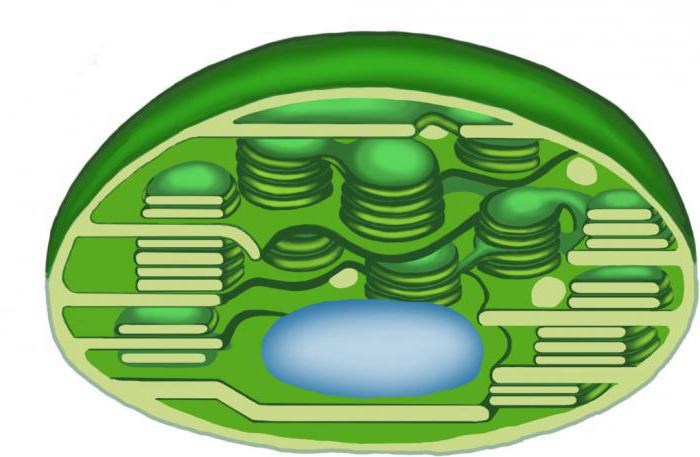What is the difference between plant cells and animals? The answer lies in the color of the plants: their color depends on the pigment content in the cells. These pigments accumulate in special organelles called plastids.
What are plastids in biology?
The difference between plant cells and animals is the presence of chloroplasts, leukoplasts and chromoplasts. These organelles are responsible for a number of functions, among which the process of photosynthesis clearly dominates. It is the pigment contained in the plastids of plants that is responsible for their color.
In the cell of any eukaryotic organism, non-membrane, single-membrane and two-membrane organelles are secreted. Plastids and mitochondria belong to the last type of cell structures, because they are surrounded by two layers of CPM.
What are cell plastids? Types of Plastids
- Chloroplasts. The main two-membrane organelles of plant cells responsible for photosynthesis. They consist of thylakoids, on which photosynthetic complexes are located. The function of thylakoids is an increase in the active surface of the organelle. What are green plastids? These are chloroplasts that contain green pigments - chlorophylls. Several groups of these molecules are distinguished, each of which is responsible for its specific functions. In higher plants, chlorophyll a , which is the main acceptor of solar energy during photosynthesis, is most common.
- Leukoplasts. Colorless plastids that perform a storage function in plant cells. They can have an irregular shape, ranging from spherical to spindle-shaped. Leukoplasts often accumulate around the cell nucleus, and in a microscope they can only be detected in the case of a large number of granules. Three types of leukoplasts are distinguished depending on the nature of the substance being stored. Amyloplasts serve as a container for carbohydrates, which the plant wants to keep up to a certain point. Proteoplasts store various proteins. Oleoplasts accumulate oils and fats, which are a source of lipids. This is what plastid is that performs the function of storage.
- Chromoplasts. The latter type of plastid, which has a characteristic yellow, orange or even red color. Chromoplasts are the final stage in the development of chloroplasts when chlorophyll is destroyed and only fat-soluble carotenoids remain in the plastids. Chromoplasts are found in flower petals, mature fruits, and even in plant trunks. The exact significance of these organelles is not exactly known, but it is believed that they are a receptacle for carotenoids and also give plants a specific color. This color attracts pollinating insects, which contributes to the reproduction of plants.

Leukoplasts and chromoplasts are not capable of photosynthesis. Chlorophyll in these organelles has reduced or disappeared, so their function has changed dramatically.
The role of chloroplasts in the transfer of genetic information
What is plastid? This is not only the energy station of the cell, but also the repository of part of the hereditary information of the cell. It is presented in the form of a circular DNA molecule, which resembles the structure of a nucleoid of prokaryotes. This circumstance makes it possible to assume the symbiotic origin of plastids, when bacterial cells are absorbed by plant cells, losing their autonomy, but leaving some genes.
Chloroplast DNA refers to the cytoplasmic heredity of a cell. It is transmitted only through germ cells that determine the female sex. Sperm cannot transmit male plastid DNA.
Since chloroplasts are semi-autonomous organelles, many proteins are synthesized in them. Also, during fission, these plastids replicate independently. However, most of the chloroplast proteins are synthesized using information from the DNA of the nucleus. This is what plastid is in terms of genetics and molecular biology.
Chloroplast - cell energy station
In the process of photosynthesis, many biochemical reactions proceed on thylakoid chloroplasts. Their main task is the synthesis of glucose, as well as ATP molecules. The latter carry in their chemical bonds a large amount of energy, which is vital for the cell.
What is plastid? It is a source of energy along with mitochondria. The process of photosynthesis is divided into light and dark stages. In the process of the light stage of photosynthesis, phosphorus residues are attached to ADP molecules, and the cell receives ATP at the output.